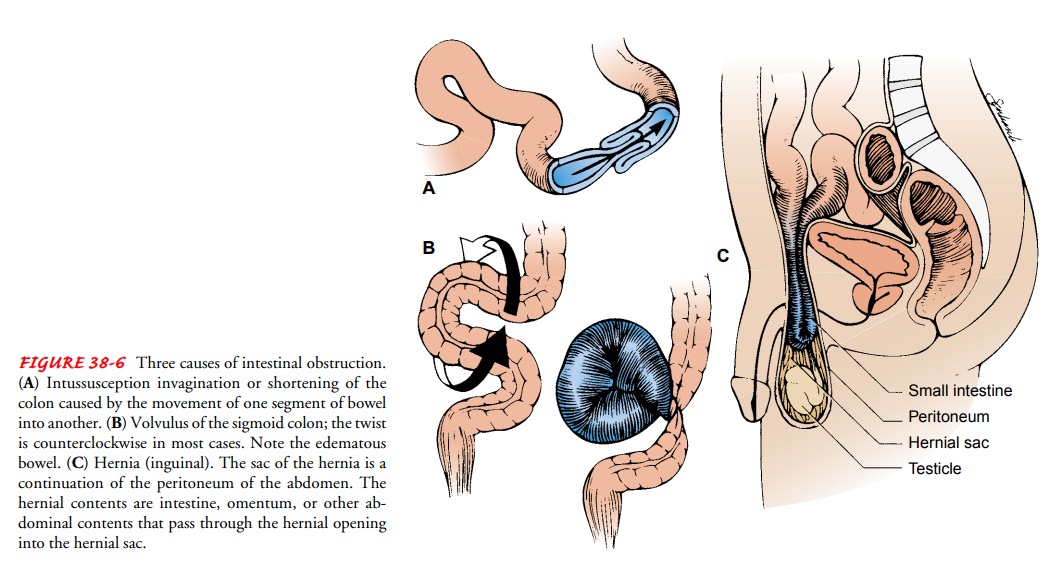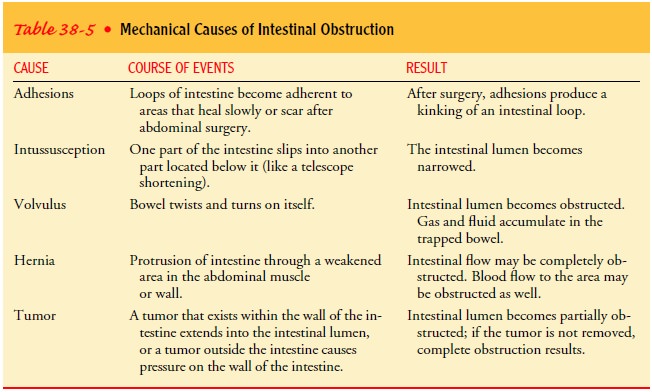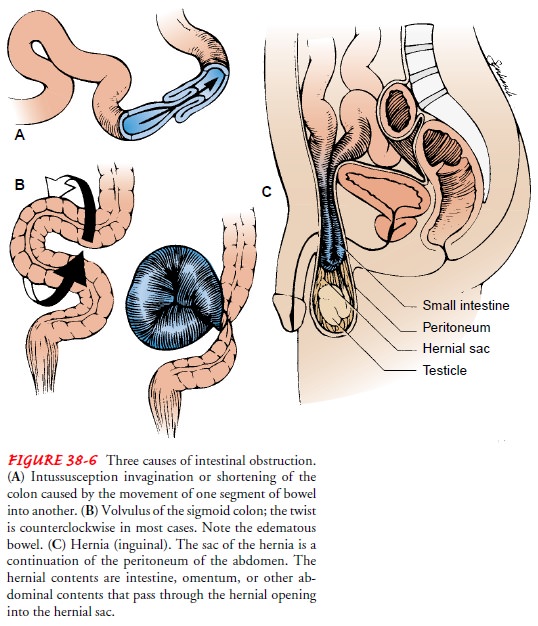Chapter: Medical Surgical Nursing: Management of Patients With Intestinal and Rectal Disorders
Intestinal Obstruction

Intestinal Obstruction
Intestinal
obstruction exists when blockage prevents the normal flow of intestinal
contents through the intestinal tract. Two types of processes can impede this
flow.
Mechanical obstruction: An intraluminal obstruction
or amural obstruction from pressure on the intestinal walls occurs. Examples
are intussusception, polypoid tumors and neoplasms, stenosis, strictures,
adhesions, hernias, and abscesses.
Functional obstruction: The intestinal
musculature cannotpropel the contents along the bowel. Examples are
amy-loidosis, muscular dystrophy, endocrine disorders such as diabetes
mellitus, or neurologic disorders such as Parkinson’sdisease. The blockage also
can be temporary and the result of the manipulation of the bowel during
surgery.
The
obstruction can be partial or complete. Its severity de-pends on the region of
bowel affected, the degree to which the lumen is occluded, and especially the
degree to which the vascu-lar supply to the bowel wall is disturbed.
Most
bowel obstructions occur in the small intestine. Adhe-sions are the most common
cause of small bowel obstruction, followed by hernias and neoplasms. Other
causes include intus-susception, volvulus (ie, twisting of the bowel), and
paralytic ileus. About 15% of intestinal obstructions occur in the large bowel;
most of these are found in the sigmoid colon (Wolfe, 2000). The most common
causes are carcinoma, diverticulitis, inflammatory bowel disorders, and benign
tumors. Table 38-5 and Figure 38-6 list mechanical causes of obstruction and
describe how they occur.


Related Topics